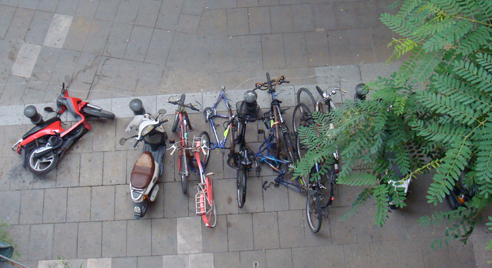Saving manufacturing requires us to stop subsidising dirty industries
18 April 2011

It is not often that you wake up on a Saturday in Sydney and have a choice of rallies to attend – but this is exactly what happened last week.
In case you missed it, the two rallies were organised in support and opposition to the proposed “price on carbon” strategy put forward by the Federal Government. Being excited by a bit of political expressionism in a city where Saturday morning priorities are usually shopping and cappuccinos, I decided to attend not just one but both.
My interest was twofold: to see whether the claims of extremism where evident in either camp; and to hear the pitch of the speakers.
Milling around the “no carbon tax” rally, it was interesting to hear Senator Eric Abetz go to great lengths to stress that this was not an “anti-climate change” rally. His position was that you may or may not accept the vast scientific evidence that climate change is real and happening, but pricing carbon is a bad idea. Abetz went on to list the many reasons this is the case, but the one that is really worth interrogating is that pricing pollution will harm the manufacturing sector.
Undoubtedly, the manufacturing sector plays an important role in the Australian economy as it accounts for just over 10 per cent of employment and almost 20 per cent of exports. In so doing, manufacturing employs 1.1 million people – with almost half of these working for firms employing fewer than 100 people.
What is important to note is that Australian manufacturing has increasingly moved away from low-end production and is moving up the value chain in areas such as high-end fashion or specialist wear (such as fire-resistant clothing).
Interestingly, manufacturing’s fortunes are the inverse of those of the current resource boom. There are a number of reasons for this, but key is the rise of China as a boom economy. It has been hungry for resources (meaning it is a great place to export for our miners) and as it has been growing, it has been flooding the world with manufactured goods (often squeezing out our manufacturers in the process).
This demand for our resources has put additional pressure on our manufacturing industry. The record high exchange rates we are currently seeing make our manufacturing industry increasingly uncompetitive.
This is a process of a resource boom leading to an uncompetitive manufacturing sector and is known as Dutch Disease, as it was first raised in the context in the Netherlands when a boom in natural gas throughout the 1960s-70s almost killed off the manufacturing sector.
The effect of this is crystallising before us in the form of a two-speed economy – which has become most prevalent in the resource rich states but is a trend across the whole country. Last week, it was reported that Western Australia’s economy technically went backwards: Both its retail and manufacturing sectors struggle while its mines continue the boom. So while some Australian manufacturing does not compete merely on price, but also on quality and sophistication, when it is priced this far out of the market, it has really begun to struggle.
This returns us to Senator Abetz’s concerns about the manufacturing industry. The decline he is concerned about is part of a longer-term trend and if he really cared about manufacturing rather than a few cheers at a rally he would support two fundamental strategies.
The first is to bring down Australia’s exchange rate to a more sustainable level. This could be done by imposing a super-profit tax on miners and directing the funds to a sovereign fund held overseas – a proposal that the government has unfortunately rejected. This is the model employed by Norway who transfers profits from its oil and gas revenues into an international fund that is now estimated to be worth US$500 billion. This eases pressure on the exchange rate and keeps its manufacturing sector competitive.
The second strategy to follow would be to support a price on carbon that would signal to the market that it should invest in advanced and clean technologies. This is because a price on carbon is actually not a tax, but a removal of a subsidy that has allowed high polluting industries to pollute for free. This is a subsidy that low polluting industries do not receive.
The price signals have focussed smart players on low carbon and high value goods. Germany, which responded to the introduction of a carbon price in 2005 with just such a strategy, has seen it have its biggest year since reunification.
This has seen Germany economy boom and jobs grow. And where have the jobs come from? Well, over the past decade Germany has seen a massive jump in so-called “green jobs”.
In the renewable sector, for example, more than 340,000 new jobs have been created. In contrast, Germany’s only domestic high carbon energy source employs 50,000 people across its entire supply chain.
Interestingly, Senator Abetz and the federal opposition are opposed to both a super-profits tax and a price on carbon.
You have to ask then, are they really interested in Australia’s manufacturing industry or simply some political opportunism?
The evidence indicates the later.
Originally published in the The Punch (opens in a new window).